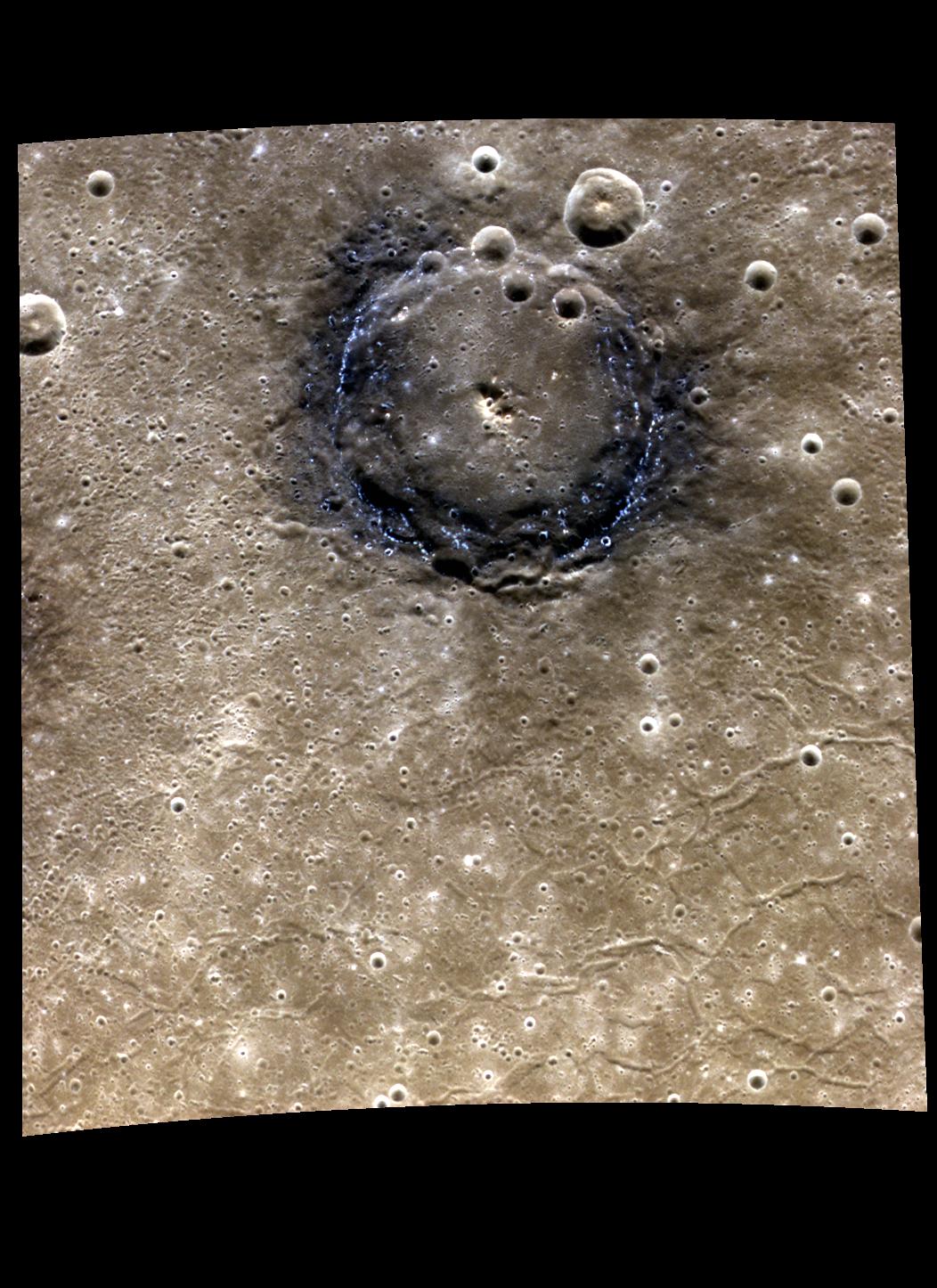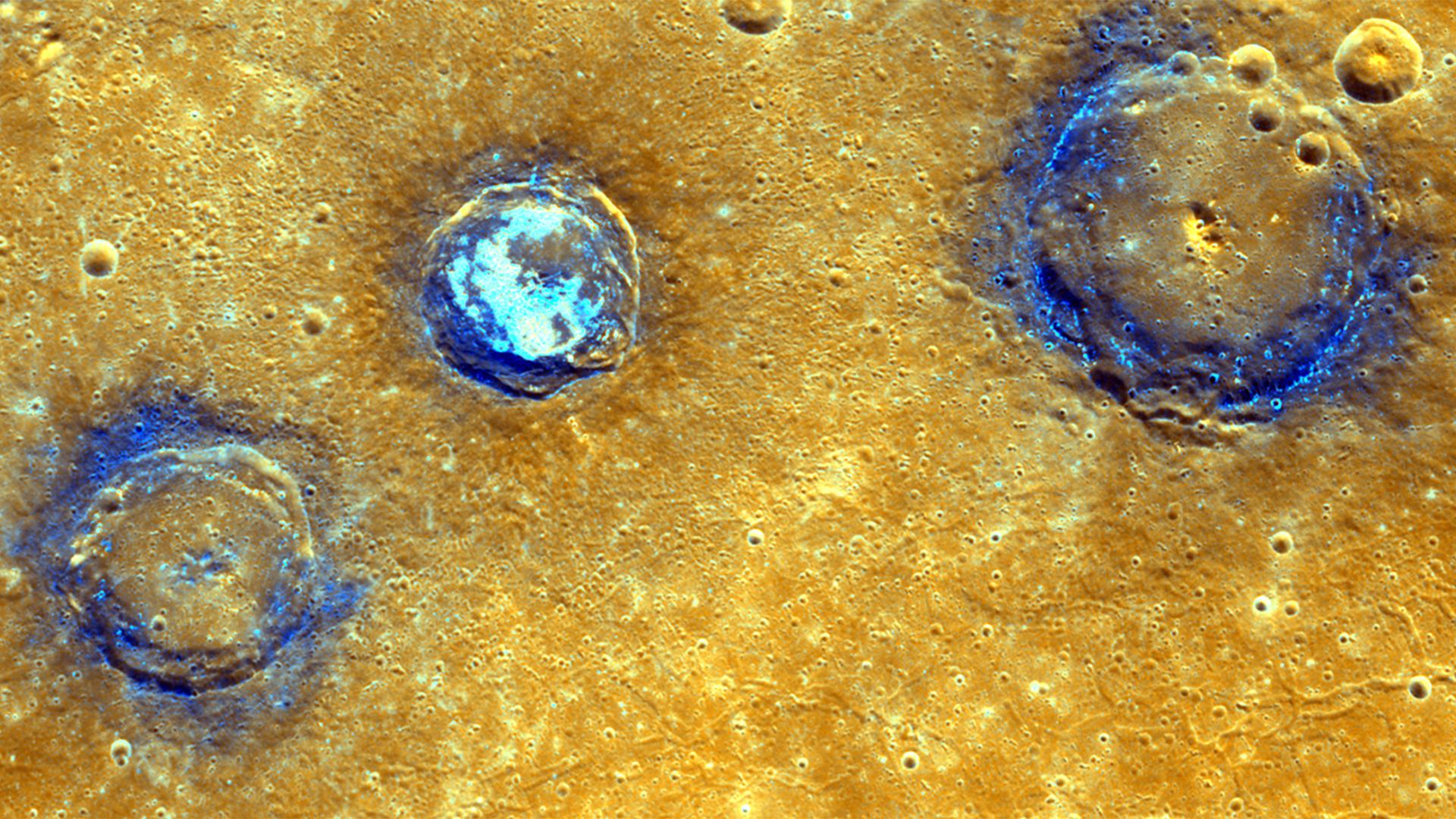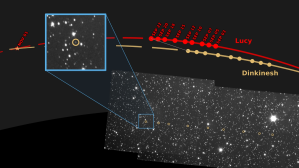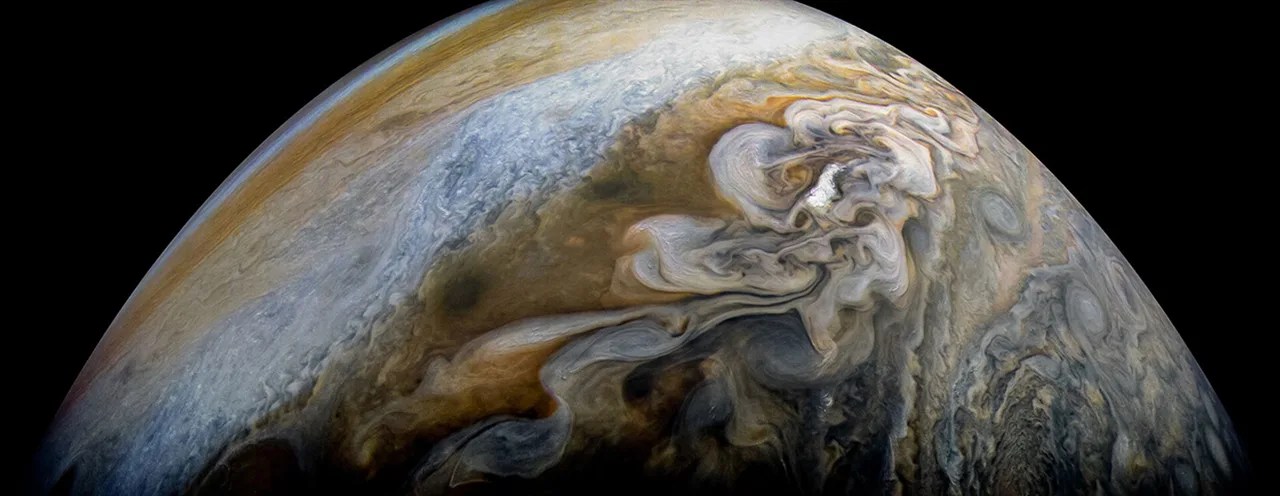6 min read
Mercury’s Strange Hollows
Enigmatic depressions on the surface have puzzled scientists since the 1970s
NASA’s MESSENGER spacecraft discovered strange hollows on the surface of Mercury. Images taken from orbit revealed thousands of mysterious depressions, pitted and uneven, in areas all across the planet, up to a half-mile (800 meters) across and 120 feet (37 meters) deep. This mosaic view of the Raditladi impact basin includes individual frames capturing areas about 12 miles (20 km) wide, which merged high-resolution monochrome images from MESSENGER’s Narrow Angle Camera with a lower-resolution enhanced-color image from its Wide Angle Camera.
For decades, scientists have been puzzling over strange hollows on Mercury’s surface, thousands of peculiar depressions at a variety of longitudes and latitudes, ranging in size from 60 feet to more than a half-mile across (18-800 meters), and up to 120 feet deep (37 meters). No one knows how they got there.
And while none are as spooky as the Sleepy Hollow of Washington Irving’s legend, Mercury’s hollows are just as mysterious and, so far, seen nowhere else in the universe.

“There’s essentially no atmosphere on Mercury,” said planetary geologist David Blewett, of the Johns Hopkins University Applied Physics Laboratory (APL) in Laurel, Maryland. “With no atmosphere, wind doesn’t blow and rain doesn’t fall, so the hollows weren’t carved by wind or water. Other forces must be at work.”
Mercury, the smallest planet in the solar system and closest to the Sun, is battered by heat, radiation, and solar wind; its extreme temperatures range from 800°F (430°C) on the sunny side, to as low as -290°F (-180°C) on the night side. It’s slightly larger, and similar to our Moon – airless, rocky, and peppered with impact craters large and small – but Mercury has rarely been visited by spacecraft, and retains many of its secrets.
Scientists got their first tantalizing glimpses of the hollows when the Mariner 10 probe flew past Mercury in the 1970s, and captured low-resolution shots of curious bright areas in some craters.
NASA returned to the small planet with the MESSENGER mission, which first flew past Mercury in 2008, then settled into orbit in 2011.
That spacecraft circled the planet more than 4,000 times in four years, collecting hundreds of thousands of images and other data, and giving researchers new insights into this little-explored world. Mariner had cataloged less than half the planet’s surface during its brief visits 40 years earlier.

“A Little Valley…Among High Hills”
MESSENGER (the Mercury Surface, Space Environment, Geochemistry and Ranging mission) finally provided a sharper view of the enigmatic tracts. To differentiate them from other surface features, researchers dubbed them “hollows” (akin to Washington Irving’s description of the terrain in “The Legend of Sleepy Hollow” – “a little valley or rather lap of land among high hills.”)
The probe sent back finely detailed, beautiful images of the hollows, looking in some color-enhanced mosaics like sheets of copper corroded with blue-green patina. In others – such as shots of Sander crater in Mercury’s vast Caloris basin – the strange landforms, etched and ragged, glow bright blue amid the surrounding crater walls and mounds. And yet the images and other data, from MESSENGER’s X-Ray Spectrometer, Laser Altimeter, and other instruments, gave only hints and no definitive answers about the hollows.

”When we got high-resolution views back of Sander, the floor of the crater just looked amazing,” said Carolyn Ernst of Johns Hopkins APL, a deputy instrument scientist on the MESSENGER mission. “It had all these crazy-shaped, irregular depressions, and it had this bright material outside of it. And to this day, we don’t fully know what causes them.”
Researchers observed that the hollows are among the youngest and brightest features on the planet, especially compared to the impact craters where most reside, which date back as far as 4 billion years. The hollows, on the other hand, are relatively shiny and new – about 100,000 years old, on average – and may still be evolving today.
Clues and Theories
“We’ve been thinking of Mercury as a relic – a place that’s really not changing much anymore, except by impact cratering,” Blewett said. “But the hollows appear to be younger than the craters in which they are found, and that means Mercury’s surface is still evolving in a surprising way.”
One possible clue to their formation is that many of the hollows are associated with central mounds or mountains inside Mercury’s impact craters. These so-called “peak rings” are thought to be made of material forced up from the depths by an impact that formed the crater. Ernst suggested a large object slamming into the planet, with the meteorite forming a new crater and tossing material from deep underground onto Mercury’s surface.
The newly-excavated material could be unstable, finding itself suddenly exposed at the surface. Because Mercury is so close to the Sun, it’s battered by fierce heat and extreme space weather – factors that might play a role in forming hollows, added Blewett, a member of the science team for MESSENGER.
”Certain minerals, for example those that contain sulfur and other volatiles, would be easily vaporized by the onslaught of heat, solar wind, and micrometeoroids that Mercury experiences on a daily basis,” he said. “Perhaps sulfur is vaporizing, leaving just the other minerals, and therefore weakening the rock and making it spongier. Then the rock would crumble and erode more readily, forming these depressions.”
Looking Ahead
NASA’s Mars Reconnaissance Orbiter spotted similar depressions in the carbon dioxide ice at Mars’ south pole, giving that surface a “swiss cheese” appearance. But on Mercury the depressions are found in rock and often have bright interiors and halos.
“We’ve never seen anything quite like this on a rocky surface,” Blewett said.
Other theories include the idea that darker areas on Mercury’s surface are graphite deposits that, when pummeled and destroyed by solar wind, collapse and leave behind pitted, hollowed areas of only the much brighter, blue-tinged materials.
We’ve never seen anything quite like this on a rocky surface.

David Blewett
Johns Hopkins University Applied Physics Laboratory MESSENGER mission participating scientist
MESSENGER finally ran out of fuel and crashed into Mercury in April 2015, but researchers are still sifting through the data it collected. Scientists are also eagerly anticipating the arrival of BepiColombo to Mercury in 2025 and what secrets the mission will reveal. A joint European-Japanese venture, with two orbiters riding together, the craft made their first flyby of Mercury in October 2021 – only the third mission ever to visit the planet.
In 1820, Washington Irving wrote of Sleepy Hollow being a place of “strange sights, …haunted spots, and twilight superstitions; stars shoot and meteors glare oftener across the valley than in any other part of the country.”
Likewise, Mercury has its own “ghosts” – craters in a previous life, later shrouded by lava – and has seen shooting stars and meteors peppering every part of its surface for billions of years. The craters they leave are named for artists and authors, including Nathaniel Hawthorne, Herman Melville, and Edgar Allan Poe, whose namesake crater contains hollows. Maybe one day Irving, their mentor and contemporary, will join their company. By then the true nature of Mercury’s strange hollows may be unmasked.

from NASA https://ift.tt/qmd4Wa6









No comments:
Post a Comment